Copyright © 2011 by James Clark
Like the films of Antonioni, those emanating, over the past five years, from Denis Côté do not lend themselves to sharp sound bites piercing to the heart of the matter. What reportage does have to work with, however, is a remark by the writer/director himself, disclaiming that his characters—Quebecois hillbillies showing striking affinities with violent death, particularly murder—should be construed as “unconventional.” Far better, from his point of view, that they be seen as “cinematic.”
The film world teems with “unconventional” figures—Henry Higgins, General Patton, Nick and Nora, Carlos, etc—the unconventionality of whom remains fully entangled in classical culture. A discussion of Côté’s work that would get to the point must have nothing to do with Toast-to-the Bride contrariness, and everything to do with the elicitation of sensuous phenomena (the phenomenology, if you like) coming our way from the screen.
Having been directed toward “cinematographic” impact (of images, montage, sounds, music, motion, transitions, confluences), we need to know the particular deployment of such factors here, for there are significant differences of alignment within the sensual current of works plying that territory which Côté—alone among Canadian filmmakers—cares about. By reason of financial constraints—his first two films cost all of $50,000. and $10,000. severally; that, combined with very brief shooting schedules, recalling the Ranown Westerns of Budd Boetticher—and particular comportment toward the phenomena, you will not find in Côté’s movies the ravishing visual effects so powerfully illuminative in the work of Wong Kar Wai. A little nod toward that artist as a colleague notwithstanding, in a rugged and isolating endeavor, occurs in Elle veut le chaos (All She Wants) (2008), where a dealer in body parts, “Mrs. Murdock,” bearing some resemblance to Chungking Express’ 223’s too-old love interest, drops by the farm house redoubt of a couple of punks in order to harvest a kidney from the feisty but overmatched protagonist, “Coralie.” For good measure, Mrs. Murdock’s driver resembles Pulp Fiction’s Vince; and the punks remind us of Fargo’s Carl and Gaear. At the outset of another of Côté’s films, Curling (2010), we are on a blizzard-swept highway and a Trooper stops by and interrogates the protagonists, a disconcertingly impassive and abusive father and his twelve-year-old daughter who, like Carl, is a redhead who craves company and conversation. She is befriended by an often incandescent woman whose boyfriend also resembles Vince. That colorful figure in the land of whiteouts shows us a different hair color every time we see her and a makeup strategy that makes us think of Patricia Arquette’s Renée/ Alice in Lost Highway. Such play upon other registers of radical investigation includes the narrative of Nos vies privées (Our Private Lives) (2007), wherein an attractive young woman brings out to her cabin in the hinterland of Montreal (by way of an internet dating site) a guy from Sophia, Bulgaria, and Breillat’s Anatomy of Hell takes on another life. In Les états nordiques (Drifting States) (2005), an unskilled laborer shadowed by a violent past travels to a forest-bound company town in the Patagonia of Quebec and makes very slight communicative progress, like the protagonist of Lisandro Alonso’s Liverpool. In Carcasses (2009), an eerily content overseer of a vast automobile graveyard is slightly unnerved by unmanageable strangers (with Down’s syndrome), as was the retarded ranger of the junk yard in Kurosawa’s Dodes Kaden. There is a moment when a solitary street light glows in such a way as to remind us of the ending of Antonioni’s L’Eclisse. In quietly introducing such distant but stimulating partners, Côté would, I think, be at least as concerned with setting in relief the cinematographic element he was positioned to deploy as his strong suit, namely, compositional, juxtapositional, and cumulative means of illuminating the range of intent of compelling interest to him.
By the time of the interview on the road from Fargo, wherein the Trooper (in Canada we call them, with rare though unintended humor, “Provincial Police”) is struck not by some bureaucratic irregularity but by the fact they are far-out, and therefore suspect, pedestrians in what has to be car country, Curling has, in its first scene at an optometrist’s, exposed the girl’s astigmatic condition, her having never been enrolled in school and her father’s blunt defiance—“That’s our business.” That is, in fact, only one aspect of a business the suspense of which disgorges with remarkable deftness a seldom audited insolvency. “Sauvageau” has ticked off the optometrist, with, “There’s no need to be like everyone else,” and the cop with, (as to walking on the highway in ugly weather), “It’s our problem, not yours.” The perhaps rousing independence of such patter has, though, to be measured against his crumpled and twitchy presence and voice, a malaise redolent of fear not nearly so apparent in his daughter (“Julyvonne”) who, if anything, seems to have been watching too many horror movies. (And yet she promisingly decries the failure to get into “contacts” as against rather geekish frames.) We soon discover they don’t own a TV and the girl seldom leaves the house and adjacent bush land. But what are we to make of that same night, when she lies in bed watching through her window a lighted Santa face being lowered, in the course of rebel-Dad’s taking down the Christmas decorations? She hasn’t been outfitted with nasty hands, but she does demur about the stature of the visual augmentation she now has to wear; and we have caught a glimpse of an archival photo of the two of them, she with her head on his shoulder. Apropos of anxieties, suspicions and precious vanities propelling the isolation of his child, our first glimpse of him on the job (as a bowling alley handyman) has him being shocked by a mocking scream from behind by his down-to-earth boss. (“You need a hobby.”) Then, at his second such job, at a motel, the first room he enters has a wide swath of blood leading from the bed to the bathroom. His similarly easy-going boss there (an elderly woman whose love for curling recalls Fargo’s population of ice-hockey fans of the Gophers), after exclaiming, “Holy fuck! He was a big Acadian trucker!” tells him not to bother cleaning it. Back home, to strike a different note (it also transpired that the motel was shutting down), he runs by Julyvonne his idea of a blast of fun. “Your choice. Some music or dessert.” She opts for the former, and from a very limited music library there emanates a song she seems to know well, Tiffany’s, “I Think We’re Alone Now.” The variable miasma of their inching through their days—while he was bouncing off the walls at his places of employment, she washed outdoor windows with some commitment to the rhythms of touching those surfaces, and then she watched a driver stop on a nearby road and pee in the ditch—receives here a dialling up to special radioactivity. In dim light, Julyvonne sits on the sofa, her knees pulled up to her neck, and does little rocking motions to the music (notably unforthcoming of the tsunami levels of the pop recordings in the films of Wong Kar Wai, David Lynch and Quentin Tarantino). Sauvageau sits rather sedately in a chair, making little scratching motions with one hand against the other and beholding her with unease. Omnipresent kinetic wrongness spotlights so pronounced a dislocation in both of them that we have to imagine the bloody motel room was but a prelude.
In the grip of that prospect, we have fully migrated from melodrama about banal crudity to an appointment with abysses engendering bloody terror and delicious poise, hate and love. So it is that the next day Sauvageau meets the bowling impresario’s new find on behalf of some hospitality for his joint, a meticulously (if far from classically) turned out, super-poised doll whose name is “Isabelle,” but it could well be Renée. After a bit of sizing him up she asks, “Are you a stressed kinda guy?” And thereby Sauvageau has come to a momentary focus as Lost Highway’s uptight slasher, Fred, not in any way mitigated by his telling Isabelle, with confusion in his eyes, “You’ve got some look!” Before driving in to work (he trusts country drivers) he confronts a little boy building a snow fort in the yard. Looking and sounding more and more like the “something else” his boss calls him, he asks the kid, “Are you alone?” After assimilating the obvious, and then something not obvious—the frozen frame of this shot (like that of many others here) priming desperate moments—he barks out, “I’ll destroy it! Go on! (and boots the wall of snow). Next day he comes upon the child’s mangled body on the side of the highway, seemingly a hit-and-run victim. Although the boy is still (barely) alive, he takes him home, notices the casualty has died in the meantime, stashes the body in the garage (where there is room for plenty more), and, days later, drives to the now vacant motel and deposits the body under one of the cabins. These episodes are juxtaposed with Julyvonne treading along a snowy forest edge (the silence only broken by the crunch of her footsteps), coming upon a tiger (the owners probably have boa constrictors in the basement) and being quietly thrilled by its beauty and mystery. Then she enters the woods and another silence only enhanced by the rush of the wind through the trees and comes upon the frozen corpses of five bikers. The wind cries in the trees. She stares fixedly, perhaps sick to her stomach. Her breath comes in little bursts. Then she races back, her black boots slashing into the crusted snow, she reaches the house, reaches her bed, hurls herself onto it, her boots, parka and toque still on, rolls herself up in the bedspread; and as she comes to a halt there is a close-up of her face. It tells us that a draft of malignancy has blown away the gentler mysteries of her physical presence.
Julyvonne had asked on several occasions to be taken to see “Rosie,” and Sauvageau had refused, implying his busy schedule left him too exhausted to go into town and visit the jail where this person of interest, who turns out to be his former wife and her mother, resides. In the course of the delay in getting together with the one warm body she wants to see, she revisits the frozen corpses, and (like Bresson’s Mouchette [whose only loved one, her mother, dies early on] headed down the river bank to a much-desired death) she rolls up to one of them. After watching and becoming excited about a spate of curling, a sort of lawn bowling on ice and rival to the advent of the bowling alley as a means to easy-does-it convivial swirl, though he must remonstrate when invited to try it, “No, I’ll slip and break my skull,” he returns home late, finds her outside in the dark and goes into a murderous frenzy, grabs her by the shoulders and marches her out of harm’s way. “God damn it! Get in the car! Be responsible! It’s dangerous at night!” To make amends he proposes they repaint the bathroom, and lets her choose the color. To his discomfiture, her choice is red. He takes her to the bowling alley, where she enjoys playing with Isabelle, though her two-handed delivery falls short of the “strutting your stuff” the old gal loves about curling. They finally do visit the jail, and Julyvonne, after a desperate embrace, tells Rosie, “I saw a tiger!” On getting him alone, Rosie seethes, “There’s nothin’ in her eyes! She’s empty! …Don’t pretend you give a damn! You don’t love her!…I know you, you run and hide… If you touch her, when I get out, I’ll rip your fucking heart out!” It is at this point that Sauvageau carts the tarp-covered traffic fatality’s body to the “Motel Mistral” (”Mistral” denoting an ugly wind that plagues Provence; and also the name of a poet, a touch of mockery here). That accelerated exposure triggers a tightening of Sauvageau’s approval rating. He has poked around the defunct motel cabins with the old gal’s arthritic husband, who enthuses about deer tracks in the snow, something to kill. Then, in the high-beams of his van, the features of his face and coat shot through with unnatural urgency, he retrieves the boy’s body from the garage and there is a cut to the underside of one of the cabins. It takes place by way of the piercing sound of his electric drill ripping away at the fencing at the base of the structure, and the murky light disclosing two screw heads that, for a flash, appear to be eyes.
The constellation of “Mr. Kennedy,” the purveyor of bowling, and Isabelle, his constant companion, whose hair color of the day—dark purple—might have been singed by the dynamics of the Mistral ripping through this part of Quebec, becomes particularly instrumental at this juncture of churning energies. The faded Pete of this hypothetical triangle needs help with his prowler, and gets a jump from this oddly electric couple. (Kennedy tells him, “You’re pushin’ your luck, Moustache.”) Julyvonne waves at Isabelle from the window. Kennedy remarks, “No TV. No internet. No fun.” (He had asked him, “You in a cult or something?” The Trooper at the outset had asked, “You like to feel the cold biting at your cheeks?” And he had shot back, “Yes, that’s it.”) The scene cuts to Kennedy’s profit centre where Isabelle is showing Julyvonne how to include a bit of style in her handling the balls. A party is going on, a party for the whole family, and Sauvageau, the picture of a sad clown, is dressed up to resemble a bowling pin (or a spark plug). The real party pro tells him (despite Kennedy’s having praised her to the skies) she really can’t speak Spanish, but, “I could make him believe anything.” The little phrase she does know (effective in so many situations) means, “I’m happy to know you.” As she delivers it, there is a quantity of warmth in her facial expression. (She and her sugar daddy form a strange Greek chorus, their robust practicality bringing to the protagonists’ jagged dysfunctionality an often laughable but also incisive alarm. She asks him, “What are you scared of?” Kennedy has fired wide, but not hopelessly so, with, “You jump in the lake to get out of the rain.”) He tells her, “I’m not well…It’ll pass.” He notices that, in the course of keeping score, Julyvonne can’t even manage simple arithmetic. He tells her that night he has to go on a trip. “I need a break.”/ “Why?”/ “I have a grown-up problem. I’m not so good in my head…” While he is gone, and she is off visiting the Wild Bunch, Isabelle and her Vince-like boyfriend come by with a toboggan and leave it on the porch.
Sauvageau has a joyless little fling with a compliant tart who is substantially beyond his depth. (The dissolution of the relationship is left ambiguous. Has he cut and run on remarking her wanting more to do with him and Julyvonne? Has he disposed of her more harshly? And, on his return, he pulls her on the toboggan (all we see at first are his mitts pulling the rope; then we see them passing the motel and its buried incongruity) to a hill buzzing with strangers who don’t bother him so much. Julyvonne had barely spoken to him when he phoned (she called out, “Rosie?!”) to say, “I feel better… I’ll be there soon, OK?”/ “If you like.”/ “I love you, Julyvonne…more than anything in the world…I’m sorry…” At the run, we see he has shaved off his moustache. She pokes at it the way she had poked at one of the corpses in the snow. He looks a bit younger. During the approach to the hooker who, it is safe to say, is not a curler, he fantasizes about being part of the curling world (early on he had practiced some moves in front of the facility, looking thereby a bit like M. Hulot), doing some high-fives and dancing with a lady twice his age. Being what he is, that basking in bathos would suit him. The film cues us to wonder about Julyvonne’s less simplistic course. In the final shot they blend into a crowd going up the hill. It’s a most tentative blend. And there’s rapid descent in their immediate future.
Côté traverses cinematically again and again the rich implications of the term, “curling.” The most prominent thrust is about how prone we are to veering from the sensual truths about ourselves. It’s one thing to be in motion, but quite another thing to navigate cogently. The mayhem and darkness suffusing these works pay homage to the generally unsuspected (even by those who pride themselves on being “unconventional”) severities of cogency. With only one exception to date (Nos vies privées), the films take as their starting point persons mired in the easy-does-it quicksand of manual labor (those of the exception being mired in the easy-does-it quicksand of ethnic sentiment and arts politics). A second dispensation of dynamics with a twist extant in these films is veering away from the overt derangement of full-bore normal woodenness. Its curvilinear presence implies an organic delicacy impinging upon an inert (mineral) savagery (hence the hostilities between Rosie and Sauvageau). The game of curling, like the play of life, entails a large number of tough shots to come. (Sisyphus might have been the first curler, as well as the first tobogganer.) As motion, the phenomena of curling in the wider sense comprise a special thrill, not readily freed (by tempering) from its lesser entanglements. Sauvageau’s former boss at the motel tells him that the sweeping “warms the ice a little.”
It is the prominence of these latter features in particular which draws us to Elle veut le chaos. Its protagonist, Coralie, like Mouchette, lives in the sticks with her unforthcoming father and mourns the loss of her mother (in this case, shipped off to a psychiatric hospital). Also like Mouchette (over and above a similar kind of brunette, horsey handsomeness) she is sexually active and on the lookout for survival funds (her befuddled father having subsided into almost total inertia). (Perhaps in view of these affinities, this is Côté’s only feature in black and white—surprisingly, perhaps, also his only film with healthy-budget-level visual impact.) We see her working from home, on the phone with a client from the Big City who has no idea the way it is in her rural municipality. “I have big tits. I hope you have big hands.” Sometime later, a well-dressed young man in a tasteful van goes around asking for “Vicky.” He hits a blank with a taciturn trio having been focused on a game of ping-pong in the yard. (We had seen the two younger players dealing with a young woman they had tied to a wreck in a dump filled with dead cars. The one who reminds us of Fargo’s Carl—short, and with a short temper, sandy hair and a weakness for previously-owned turns of phrase—says to her, “Our confidence in you has bottomed out.” He’s been batting stones with an aluminum baseball bat, and now he begins smashing parts of the frame near where she’s bound. [He’s named “Spaz.”] With some disappointment he hears his partner, “Pic,” a chubby follower exuding [in contrast to Spaz] very low self-esteem, note, “She’s fainted.” They go on from that statement to intercept Coralie’s former boyfriend—just back from jail—their big-wheeled truck cutting him off as he walks her bike uphill enroute to selling a bag of vegetables. They take his food, wreck the bike, and that is just a warm-up for Spaz’s gunning him down a bit later, for being found with two blonde Russian women whom he had brought in to do tricks at the farmhouse they had commandeered from a distant relative of Pic’s. (A far cry from Fargo’s Blue Ox Inn, but Coralie’s learning curve differs from Marge’s. Also a bit of a switch is the victim, “Frenchie,” a personage with bone structure and poise so superior to everyone else’s here as to virtually guarantee his surviving. The juggernaut steered by Spaz spares neither looks nor courage, and Coralie’s being at competitive odds with him at that Mecca of romance—one of the Russian gals neatly quipped, when asked by her why she left Russia, “To see Niagara Falls”—screws up the tension out of which surprisingly lofty discoveries can occur.)
The day tripper finally makes it to “Vicky’s”—she calls from her bedroom window, “Come in, Cédric”—and he has to climb over the defensive line on the steps, comprising Frenchie and her dad. “I’m not Vicky”/ “I’m Henri.” Coralie is a determined but uninvolved entertainer; then she does cuddle him a bit, which leaves him confused. “Are you crying?”/ “No…Thanks for coming out here…Drive fast and don’t look back…Merci…Give me a hundred bucks.” He tosses the cash on the bed and takes her panties as a souvenir. Between roaming the woodlots, swinging on a big steel gate, and meandering along a river that makes one think of the Po Valley in Antonioni’s Il Grido, Coralie evinces a surprising social resilience. Pic comes by and asks her to give him piano lessons. “Can I come here?”/ “Go away.” Although they are just a step ahead of starvation, and the tornado that is Spaz looms in the near distance, she and her father comprise a motley parade marking time with regard to a new route as yet to be determined. Skirmishes with the neighbors increase, including her being on hand to distract the dispossessed property owner who goes into his corn field with a handgun, claiming, unconvincingly, but still productively, “There are groundhogs.” At a second run, he does manage to kill himself. She had declared to him, “I gotta go somewhere else…I don’t feel too good these days;” and then, later, when he observed, “You should get away from here.”/ “No.” The Russian girls while away an afternoon with some ballet exercises, emitting an emotional resolve far surpassing hers.
Like Julyvonne, the prospect of seeing her mother holds a promise of some kind of much needed tune-up and she finally gets her step-dad headed in that direction. The excursion to Montreal is punctuated by an evening at an outback bar where a Montmartre-style Bal Musicale is in progress. The sexy self-assurance of these proceedings only serves to highlight the unshakable gloom she has embraced. Her father—far more focussed on loosening up the homestead than seeing his wife—claims, “I’ve been ruminatin’…I’ve got a plan…” She gives off a pinched sneer and mutters, “You won’t do nothin’” Then she thinks to bruise him a bit more by pressing him about Pic’s remark that she has the same eyes as the guy who shot himself. This never-close relationship now spinning to complete dissolution, he recounts a strategic night when Mom was so full of drugs and beer that any one of five party-goers might have impregnated her. “It could have been me.” He cuts out next morning before she gets up; she hitches a ride back to the battleground, immediately gets scooped up by Spaz in the ubiquitous camouflage pants and tank-like truck, and breaks down in the passenger seat, claiming to be desperate for cash and parts unknown. He promises her six thousand dollars and a get-together with Mrs. Murdock. “I can’t let you go without keeping something.” While she’s under anaesthetic back at her house, her surprisingly canny dad, with the assistance of the Russian girls, sets up a diversionary fireworks display, kills in the dark both Spaz and Pic—depositing their bodies in a gravel pit (as in all of these films, corpses are disposed of as if they are dead sparrows)—and, on regaining consciousness and pulling off the dressing to expose a long abdominal suture wound that doesn’t look like any kind of progress, she staggers out, along that Lost Highway (casting a long shadow that resembles a knife), to see Spaz about that six thousand. Finding all the lights shot out, she heads back, and there is another of those infrequent song tracks interrupting an otherwise steady sprinkle of little signs of impossible motion. “…She wants the end without the start…A dream life…All she wants…She wants chaos…”
Côté, being, among many things (including a one-time movie critic), a manager of rock bands, he would have us savor—as Lynch did at the end of Lost Highway—the discrepancy between such an anthem and the hard facts being presented. His endings are something to behold for a long while. (Perhaps that is why there is a riveting bar band presence keeping us hanging around for the long scroll of credits.) At the end of Drifting States, the man of few words—who killed his on-life-support mother and made baby steps toward connecting with his rustic neighbors—gets a visit from a cop, perhaps wanting to talk to him about the charred body at the end of the road. At the end of Nos vies privées, the Bulgarian couple dissolving their brief awesome time, at a bar in the Quebec forest, try (in complete isolation from each other) to put a spin upon the guy she murdered and the shock he needed, while being doused with the electro-pop motif from Anatomy of Hell. At the end of Carcasses, a recluse no longer finds to be ideal his seclusion, and has no idea where else to go.
Unlike other notable cinematic efforts regarding this viscosity (including Jacque Rivette’s Jeanne la Pucelle), those by Côté eschew singularities by loners whose lucid resolve wins them a lifetime pass into a big minefield. The singularities he rocks our way are conflagrations fired up by narrative variants of careless smokers. Watching flea-bag lives becoming something more may be a particularly germane conduit for a new century having fastened itself into high-speed travesty. (Lynch has telegraphed where he stands in this matter, by, in, I think, the supplements to Inland Empire, temperately snarling. “I didn’t make this to be watched on your damn phone!”) The “cinematic” portals he amplifies may be in aid of a filmic compatibility with the creative allure of surfing the web, a buzz that would perhaps be stymied by the similarly operative (though equivocal, in its dealing with fatalism) topspin of film noir, stigmatized, in the eyes of most such dubious visionaries, by its presumably passé energies. Côté’s phenomenological cull is in fact more closely allied to horror films. But whereas the point of such a densely populated domain tends toward fatalist or nihilist submission, the kind of filmic architecture Côté displays has been tricked out with extensive allusions to imperilled but self-assured defiance in order to imply not only affinities but a range of struggle requiring more reflection.





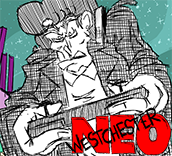



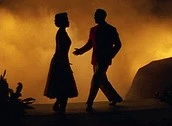
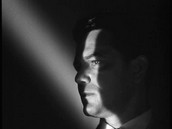

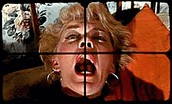










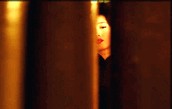

 Click on names for archives
Writers/Founders
Click on names for archives
Writers/Founders
You have me speechless here Jim. Your passion for Cote’s work shines through every sence in the spirit of passing the word on a filmmaker who is now making his mark on the festival circuit. I look forward to CURLING and some of his other works, and marvel at his versatility as a critic and rock band manager. I very much appreciate the excellent reference points pointing to Lynch and Rivette among others.
A towering essay that used up most of my school prep period, but well worth it.
I’m really glad to have managed to convey to you, Sam, the work of someone with special energies going into the twenty-first century. What I find particularly exciting about Cote’s films to date is their doing some preliminary explosive clearing in face of a challenge to sensibility yet to be tackled.
Often, when watching these movies for the first time at the beginning of the month, my thoughts would wander back to Antonioni’s Red Desert and its stature as a magnificent mine shaft he never again set foot into. (There are so many moments when Cote has his protagonists in close-up from behind, with the textures of their hair converging with the surround, a situation that has Red Desert’s Giuliana say at one point, “My hair hurts.”) When, at the end, Giuliana, with unusual calm, remarks to her child who has been pushing buttons that had given him lots of cruel fun in the recent past, “The little birds don’t fly there any more” [into poisonous emissions], she indicates that she’s finally eqipped to deal with the “two mysteries at once” broached in her bed-time story. I think Cote is headed toward that vast territory of tough love.
And Boetticher, Kar-Wai, the Coens, Alonso and Breillat too Sam!
I agree this is a beautiful piece of work, and one fueled with energy and a full understanding of Cote’s cinema. I’d love to see Curling and Carassas.
Indeed Frank, Jim has left no stone unturned here. I also find it amazing how much Cote was able to accomplish with such meagre finances at the start.
Thanks for your enthusiasm, Frank. I’ll see about getting for you a copy of Curling at least.
You have done a wonderful job explaining the significance of Cote’s “Curling” title. I haven’t seen any of his films yet, but I take this as a kind of definitive proposition.
Thanks, Peter, for venturing into this unknown territory.
The workings of the idea, “curling,” are, I think, known to quite a few filmmakers, even though they might not use that term and would have nothing to do with the game.
Don’t consider the case closed, at least until you’ve seen the work. I could provide you with a copy of Curling, if you want to go further into this matter.
Jim, I anticipate getting a copy from our “mutual friend” as Dickens would say.
We’ll try to create a buzz 🙂
man these films seem great, and the ideas they explore seem incredibly interesting. Your review is excellent (as always), I’m just embarrassed I’ve never seen a frame of this director’s work. A fact I’ll now look to rectify asap.
Wonderful to hear you’re interested, Jamie. Sam will have a copy of Curling in a few days. I’ll see about the other films.
It’s nothing to be embarrassed about, not having heard of his movies. They’ve only been shown at festivals and the like. The five on hand are arrestingly austere— exciting to us, but perhaps off-putting to more popular tastes. I found it encouraging that, a couple of nights ago, when we showed Curling to some friends and acqaintances at our condo’s media room (all much younger than I am), there was recognition that, although odd, there was something very attractive about it. I think he’s headed in a direction that provides more leeway for his great sense of humor.